Recent Storm Damage Posts
After the Storm: Navigating Tree Damage Assessment with Expertise
1/9/2024 (Permalink)
As the skies clear and the echoes of a storm fade, the aftermath often reveals a changed landscape, with trees standing as witnesses to the power of nature. Assessing tree damage is a critical step in the post-storm recovery process, ensuring the safety of your property and those around you. In this blog, we'll explore the key considerations for assessing tree damage after a storm and provide insights on how to navigate this crucial task with expertise.
Safety First
Before you embark on assessing tree damage, prioritize safety. Be cautious of downed power lines, hanging branches, and unstable trees. If you're unsure of the safety of the area, consult with a professional arborist or local authorities before proceeding.
Begin your assessment by determining the stability of each tree. Inspect the trunk for leaning or shifting, as these signs could indicate structural instability. Assess the ground around the tree for uplifted roots or signs of soil disturbance, which may compromise stability.
Check for Split or Broken Limbs
Examine the branches for any signs of splits, fractures, or breaks. Broken limbs, especially those hanging precariously, pose a significant risk and may require immediate attention. Note the size and location of damaged branches as this will impact the pruning approach.
The tree's crown, consisting of its branches and leaves, is a crucial element for overall health. Assess the crown for extensive damage, including torn or missing foliage. Severe crown damage may impact the tree's ability to recover, and professional intervention may be necessary.
Inspect Bark for Wounds
Wounded bark exposes the tree to potential diseases and pests. Evaluate the trunk for any bark damage, including peeling, tearing, or splitting. If the damage is extensive, it may compromise the tree's structural integrity and longevity.
Storm-damaged trees are more susceptible to diseases and infestations. Inspect for signs such as oozing sap, discolored foliage, or the presence of pests. Prompt identification and treatment can mitigate further damage and aid in the tree's recovery.
Prioritize Immediate Hazards
Address immediate hazards first. If a tree poses an imminent risk to people or property, seek professional assistance promptly. Arborists have the expertise and equipment to safely handle dangerous situations and can guide you on the best course of action.
Evaluate the overall health and viability of the tree. Trees that have suffered extensive damage may struggle to recover fully. A professional arborist can provide guidance on whether a damaged tree can be salvaged or if removal is the most prudent course of action.
Determine the Need for Pruning
Pruning damaged branches is often necessary to promote the tree's recovery and reduce the risk of further harm. Focus on removing broken, hanging, or split limbs using proper pruning techniques. Avoid unnecessary pruning that could stress the tree further.
When in doubt, consult with a certified arborist or tree care professional. They possess the expertise to assess tree damage accurately and recommend appropriate actions, whether it's pruning, bracing, or complete removal.
Document and Photograph
Document the extent of tree damage through photographs and notes. This documentation can be valuable when working with insurance claims or seeking professional assistance. Capture the overall condition of the tree, damaged areas, and any immediate hazards.
Once immediate concerns are addressed, consider fortifying your property against future storms. Strategically planting new trees, selecting wind-resistant species, and proper tree maintenance can enhance the resilience of your landscape
Assessing tree damage after a storm is a task that requires a balance of caution and expertise. Prioritize safety, thoroughly inspect each tree, and seek professional guidance when needed. By navigating the post-storm tree assessment process with care and knowledge, you contribute to the safety and longevity of your landscape while promoting its recovery after the forces of nature have passed.
How to Address Tree Damage to Your Property After a Storm
9/11/2023 (Permalink)
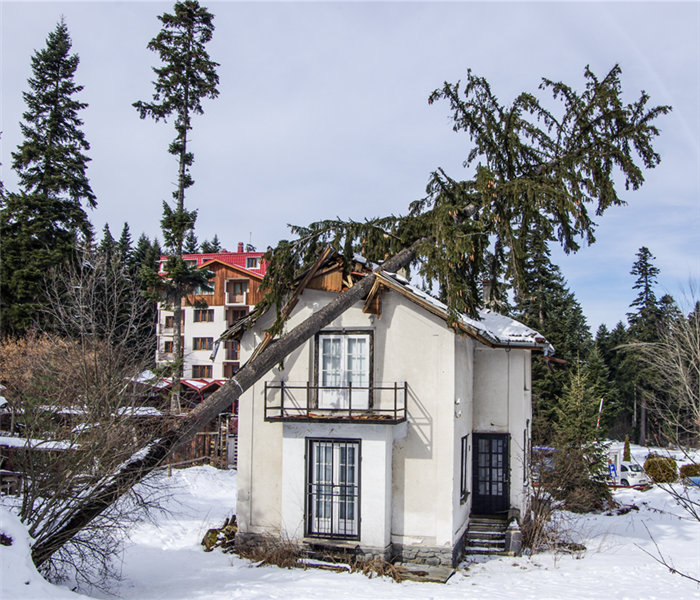 By taking prompt and responsible action, you can restore your property's integrity and maintain a safe and beautiful landscape for years to come.
By taking prompt and responsible action, you can restore your property's integrity and maintain a safe and beautiful landscape for years to come.
Severe storms can leave a trail of destruction, with fallen trees posing a significant threat to homes and businesses. As a responsible homeowner or property owner, it's essential to address tree damage promptly and take necessary steps to ensure the safety of your property and everyone around. In this blog, we'll explore the importance of addressing tree damage after a storm and provide practical tips on how to handle the situation effectively.
Prioritize Safety First
When dealing with tree damage after a storm, safety should always come first. Follow these precautions:
- Keep a safe distance from damaged trees, especially those with hanging or broken branches that could fall unexpectedly.
- Check for downed power lines near fallen trees and avoid contact with them. Report any issues to your utility company immediately.
- Inspect your property for structural damage caused by fallen trees or branches and address any potential hazards.
Assessing Tree Damage
Once it's safe to do so, assess the extent of the tree damage:
- Look for broken branches that need to be removed promptly. Avoid attempting to remove large branches on your own, as this can be dangerous.
- Examine trees that may have been uprooted or are leaning dangerously. Leaning trees with weakened root systems can pose risks to nearby structures.
- Inspect the tree's canopy for crown damage. Stripped leaves and broken limbs can leave the tree vulnerable to disease and pest infestations.
Seek Professional Help
For significant tree damage or tree removal, it's best to enlist the services of a professional arborist:
- Arborists have the expertise and equipment to safely assess and address tree damage.
- Removing large branches or uprooted trees requires specialized skills to prevent further damage or injuries.
- Arborists can determine whether a damaged tree can be saved or if removal is necessary, considering the tree's overall health and condition.
Addressing Tree Damage to Your Home or Business
Dealing with tree damage to your property requires careful attention and action:
- Document the Damage: Take photographs of the tree damage for insurance purposes. This documentation will be valuable when filing a claim.
- Temporary Repairs: If your property has sustained damage, consider making temporary repairs to prevent further harm. However, ensure you prioritize your safety and seek professional assistance from companies such as SERVPRO as soon as possible.
- Clearing Debris: Remove fallen branches and debris carefully to clear pathways and access points around your home or business.
Tree Care and Restoration
Once the immediate safety concerns have been addressed, focus on tree care and restoration:
- Pruning: Trim broken branches and prune damaged limbs to promote the tree's healing process and prevent decay.
- Mulching and Fertilizing: Apply mulch around the base of damaged trees and consider fertilizing to aid in their recovery.
- Watering: Adequately water affected trees, especially those with crown damage, to support their revival.
Addressing tree damage after a storm is crucial for the safety and well-being of your home or business. Prioritize safety, assess the extent of the damage, and seek professional help when needed. Document the damage for insurance purposes and clear debris carefully to ensure a safe environment. Remember to provide proper care and attention to damaged trees to aid in their recovery. By taking prompt and responsible action, you can restore your property's integrity and maintain a safe and beautiful landscape for years to come.
Emergency Preparedness 101: Conducting Effective Emergency Drills at Work
6/12/2023 (Permalink)
As a disaster restoration company, we know the importance of being prepared for emergencies. Conducting regular emergency drills is one way to ensure that your workplace is ready to handle unexpected situations. In this blog, we'll go over the steps for conducting an emergency drill at work to help keep your employees safe.
Step 1: Plan the Drill
Before conducting an emergency drill, it's important to plan out the details. Determine what type of emergency you want to simulate, such as a fire or earthquake, and decide on a date and time that works for everyone. Make sure to communicate the drill plan to all employees, including what actions they should take during the drill.
Step 2: Conduct a Safety Review
Before conducting the drill, review the safety procedures for the emergency you'll be simulating. Make sure all employees are aware of the procedures and know how to respond. This review should include identifying emergency exits, the location of first-aid kits and fire extinguishers, and any other safety equipment that may be needed.
Step 3: Conduct the Drill
When conducting the drill, make sure to treat it as if it were a real emergency. This means activating alarms and instructing employees to follow the emergency procedures outlined in the safety review. After the drill, review the results to identify any areas for improvement and adjust your emergency plan accordingly.
Step 4: Debrief and Provide Feedback
After the drill, it's important to debrief with employees to discuss what worked well and what could be improved. This feedback can be used to improve the emergency plan and to ensure that all employees are prepared for future emergencies. Make sure to also thank employees for their participation and emphasize the importance of emergency preparedness.
Step 5: Conduct Regular Drills
Conducting regular emergency drills is key to ensuring that your workplace is prepared for unexpected situations. Make sure to schedule drills on a regular basis, such as once a quarter, to ensure that all employees are familiar with the emergency procedures and to identify any areas for improvement.
In conclusion, conducting emergency drills at work is an important part of ensuring that your workplace is prepared for unexpected situations. By following these steps and conducting regular drills, you can help keep your employees safe and minimize the impact of emergencies. If your workplace has experienced a disaster or emergency, our team at SERVPRO of Boston Downtown/Back Bay/South Boston is here to help with disaster restoration services. Contact us today to learn more.
For more information on emergency preparedness and to access additional resources, visit the Occupational Safety and Health Administration (OSHA) website.
Tips for Preventing Sewage Backup
7/31/2022 (Permalink)
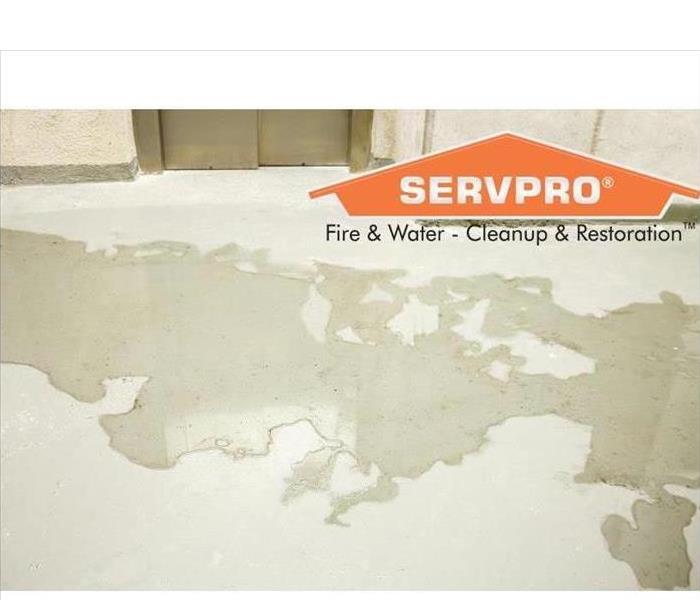 Sewage backup in Back Bay, MA
Sewage backup in Back Bay, MA
A regular flood can cause enough damage on its own, but a sewer flood is its own beast entirely. Sewage water is a Category 3 biohazard that can cause a lot of damage to your property. It's a good idea to take the proper precautions and prevent sewage backup before it occurs. These tips may benefit you if you believe that your home in Back Bay, MA, may be at risk.
Upgrade Your Drain
Investing in an upgrade for your drainage system is significantly less expensive and stressful than dealing with flooding and sewer cleaning. There are 4 main devices that you can choose from, based on your home's needs:
The Back Flow Prevention Valve: Also known as a backwater valve, this handy device reverses the flow of sewage to prevent the black water from flowing up into your basement.
The Overhead Sewer: This device is going to be a bit more costly than the others on this list. It works by collecting excess sewage and redirecting it into the building's main sewer line.
The Floor Drain Plug: On the other side of the coin is this neat little contraption. Floor drain plugs are relatively inexpensive and easy to install. They're installed directly beneath the drain and function by floating up to plug the drain hole when excess water begins to build. Once the water levels decrease, the drain is automatically unplugged.
The Standpipe: A standpipe is another device that works to redirect water flow, as opposed to blocking it. The pipe is installed sticking up out of the floor, hence the name. Any backup water that rises out of the drain is redirected into the pipe instead of flooding out onto the basement floor. If the water rises above the top of the standpipe, then the contraption won't work.
Storm damage and sewage backup are not to be taken lightly. Preventative methods can reduce your risk, but they won't provide 100% protection. Be sure to consult storm remediation experts if your home does experience a basement flood.
Flood Safety Before, During and After the Flood
6/20/2022 (Permalink)
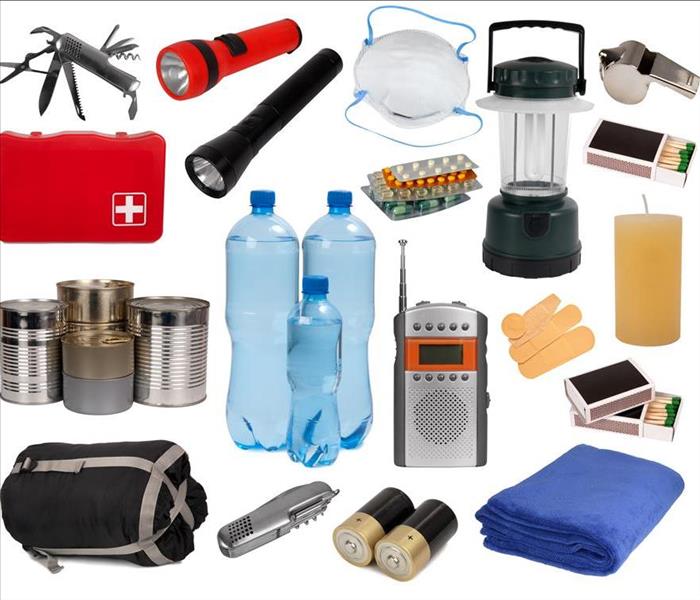 Keep a well-stocked emergency kit ready.
Keep a well-stocked emergency kit ready.
Flood Safety
Flood safety is largely a matter of preparation and staying calm. If a storm surge or other weather event strikes Chinatown, MA here's a quick rundown of useful safety tips to keep in mind.
What To Do Before the Flood
If you have the opportunity to be ready for rising water, use that to your advantage. Deploy any sandbags or other barriers you have.
At a minimum, keep a well-stocked emergency kit ready that includes the following:
- Enough food and water for at least three days
- Medicine for at least three days
- Flashlights
- First-aid kit
- Blankets
- Radio
- Batteries
- Pet food, toys, and medicine
Be advised that homeowners insurance doesn't include flood insurance, either. Knowing your flood risk in Chinatown, MA, and talking with your insurance agent are two simple ways to protect your home as well.
Flood Safety During the Event Itself
Move to the highest ground possible. If the local government tells you to leave, leave.
If you're at home during a flood, stay inside and away from the water. The NWS reports that as few as 6 inches of water is enough to topple an adult. Inside the home, if the water in a room rises above the electrical outlets, stay out of that room.
It's important to remain up to date on what's happening, too. Use that radio in your emergency kit, as well as social media and local TV if you still have access.
Handling the Aftermath
Many of the same tips hold true after a flood: Most importantly, stay away from the water and keep yourself informed. Call a flood damage mitigation company to start the restoration process right away, and leave the handling of all soggy materials to the experts. Flood water is typically contaminated. Remember that flood waters can affect the structural elements of your home, too, so proceed with caution, especially if you've been away.
Flood safety is an area of knowledge most people hope they never have to call on. Being prepared, however, is one of your best defenses against Mother Nature.
Steps to Filing a Flood Claim
5/16/2022 (Permalink)
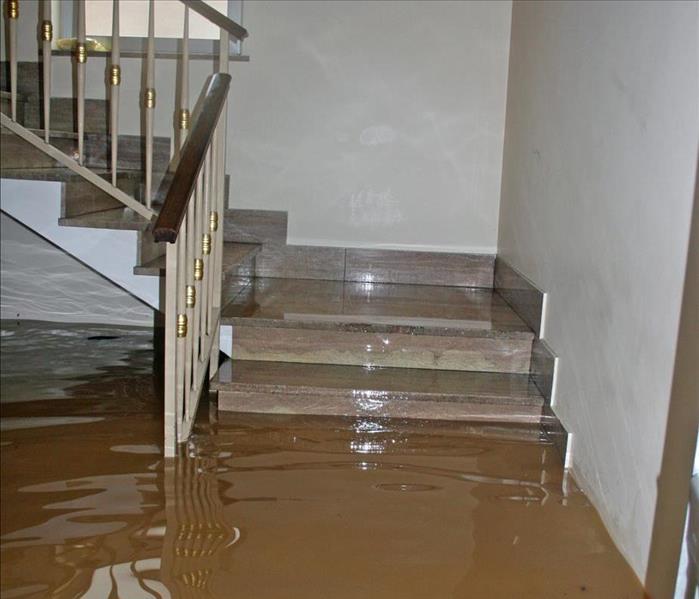 Flood damage in Seaport, MA.
Flood damage in Seaport, MA.
How to Make a Flood Claim
If a storm has caused flooding and water damage in your home in Seaport, MA, and you have insurance, you should file a flood claim as soon as possible. Processing a claim can take a little while, but you should not wait to minimize the damage to your home.
1. Call and Start the Flood Claim Process
One of the first things you should do is call your insurance company and report the storm damage. The person on the phone will let you know what you need to do to begin your insurance claim and prepare for the adjuster's inspection.
2. Start the Cleanup Process
After a large storm, insurance companies are extremely busy because many people are dealing with damage. It may take a few days for the inspection of your property to occur, but you should start cleaning up to prevent further damage and mold.
You can do some things yourself, like open doors and windows to increase ventilation and put towels down on the carpet. However, you should also call flood restoration specialists because they know how to mitigate damage and restore items that do not have to be thrown out.
3. Document Losses for the Inspection
Prepare for the inspection by documenting damage and losses. Take videos and pictures, especially before throwing anything away. The more documentation you have, the better your chances are of being reimbursed.
4. Keep All Receipts Related to Flood Restoration
During the cleanup and restoration process, keep track of all expenses to hand over to your adjuster. Have the restoration company give you an initial estimation, and keep receipts related to the cleanup efforts.
A flood can cause a lot of damage to your home. Whether you have standing water, or your items are wet from the receding waters, you should file a flood claim and do it properly for the best outcome.
How Can I Protect My Building From Hail?
4/6/2022 (Permalink)
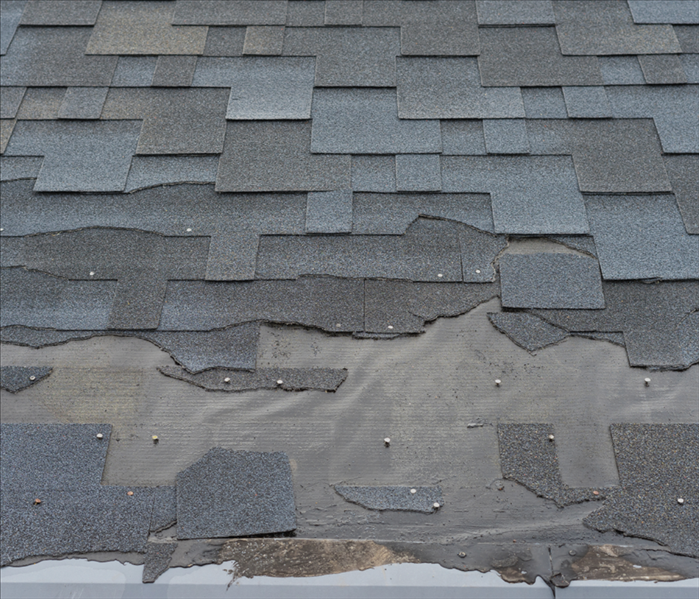 Regularly inspecting your roof will help prevent damage during a storm.
Regularly inspecting your roof will help prevent damage during a storm.
Prevent Roof Damage From Hail
While flooding and wind damage might be the first things you think of after a storm in Boston, MA, hail damage can happen, and it can be severe. As you think of ways to protect your property from storm damage, consider taking steps to prevent roof damage from hail.
Inspect Your Roof
Maintaining and regularly inspecting your roof will keep it in good shape, helping prevent damage during a storm. Check the following areas:
- Decking
- Gutters
- Drainage pipes
- Flashing
- Vents
- Surface membranes
Roof damage can lead to water in your attic, wet insulation and other secondary damage that may require the help of a commercial restoration company.
Protect HVAC Systems
HVAC equipment is sometimes mounted on the roof of a commercial property. If yours is roof-mounted, check to see if it is designed to withstand hail impact. If not, you can install wire mesh, hail guards, or other protection to shield your equipment. Hail guards are designed to protect from hail impact and may also be resistant to rot and UV rays as well as corrosion and abrasion. If you use hail guards, they should also be designed to withstand uplift pressures.
Use Impact-Resistant Skylights and Solar Panels
If you use solar panels, be sure they are designed to the standards of the International Electrotechnical Commission or IEC. The IEC code requires solar panels to meet a certain impact test rating to their standards.
Similarly, if you have skylights, they should also meet impact standards and building codes in your area. If you know ahead of time that there is a chance of hail, you can cover your skylights with plywood, a storm shutter or a metal cap to prevent hail damage. Regular inspections will help keep your skylight in good shape.
Maintenance and planning before a hail storm in Boston, MA, can go a long way in preventing roof damage to your commercial property.
Help Protect Your Home With Storm Shutters
1/14/2022 (Permalink)
 A way to protect your home from high winds is by installing storm shutters.
A way to protect your home from high winds is by installing storm shutters.
Protect Your Home From High Winds
In areas prone to high winds, residents often look for ways to protect their homes from damage. If your home is located in Financial District, MA, adding storm shutters to your property can not only provide protection but could also increase your property value. Below is a list of some of the shutter solutions most frequently chosen by homeowners, so you can see which option may be right for your property.
1. Storm Panels
Other than boarding up your windows with plywood, storm panels are one of the most cost-efficient ways to protect your home from high winds. These panels are removable during the hurricane off-season, but when in use, slide onto either permanent tracks or bolts installed around your windows. At a cost of only $7-$10 per square foot, aluminum storm panels can provide solid protection without breaking the bank.
2. Accordion Style
An accordion-style option has a similar look to a storm panel when in use but is folded and stored in a permanent box near the window until you need it. The cost ($15 to $20 per square foot) is about double that of a storm panel, but it is less burdensome to operate each year.
3. Bahama Style
Bahama-style storm shutters can be one of the most aesthetically pleasing choices and are sometimes used on homes for decorative purposes only. They are permanent fixtures that prop open when not in use, then lowered and secured when needed for protection. Priced around $20 to $30 per square foot, they could be a beautiful and functional option for your home.
4. Roll-Down Style
At $35 to $50 or more per square foot, roll-down-style shutters are more expensive than other options but can provide the most security and ease of use. Operated by a hand crank or sometimes with just the touch of a button, they roll up into a permanently installed box when not needed.
Restoring your home after damage from a storm will involve the help of experienced professionals, so taking extra measures to secure your home can be a worthwhile investment. Shutter options like the ones listed above can help reduce the damage to your property during high winds.






 24/7 Emergency Service
24/7 Emergency Service





